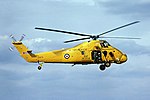Deiniolen

Deiniolen (; Welsh: [dɛinɪˈɔlɛn]; Welsh pronunciation) is a village in Gwynedd, Wales, at the foot of Elidir Fawr, in Llanddeiniolen Community. Deiniolen has views over Caernarfon (7 miles away) and on a clear day, Holyhead Mountain and occasionally the Wicklow Mountains in Ireland, can be seen. The population of the electoral ward was 1,909 as of 2011, including nearby Dinorwig, with 81.2% of the population speaking Welsh. The community, Llanddeiniolen, has a population of 5,072 as of the 2011 census, the third-largest in Gwynedd. Ysgol Gynradd Gwaun Gynfi provides Welsh-medium education for children between 3 and 11 years in the village. The slate industry was an important employer in Deiniolen until the closure of Dinorwig Quarry in 1969.
Excerpt from the Wikipedia article Deiniolen (License: CC BY-SA 3.0, Authors, Images).Deiniolen
Geographical coordinates (GPS) Address Nearby Places Show on map
Geographical coordinates (GPS)
| Latitude | Longitude |
|---|---|
| N 53.146 ° | E -4.121 ° |
Address
LL55 3EH , Llanddeiniolen
Wales, United Kingdom
Open on Google Maps










